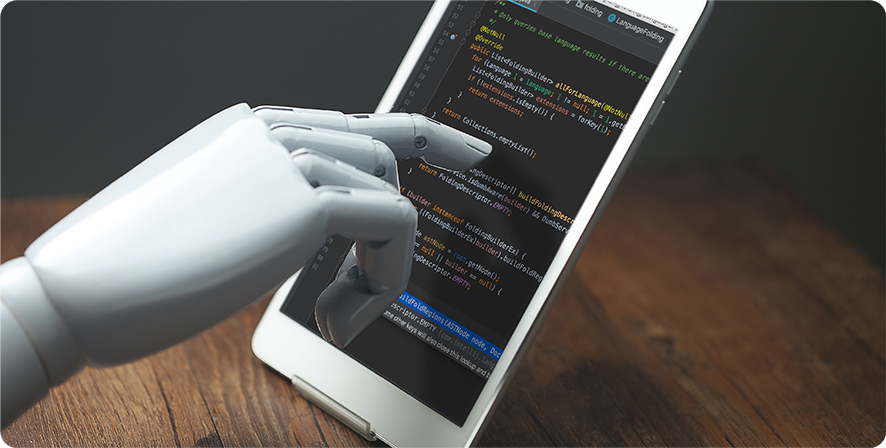As ‘to test or not to test’ has never been a question, ‘how to test’ is and for long will be a relevant one. The best option for a specific project is not even close to a good one for many others. How to make sure you get the best from QA services? Start with the expertise in Manual Testing and Test automation and see what benefits it can bring to your product.
For a project, testing can be compared to what distilling is for whiskey production. The process is iterative, with each new phase taking it to a higher, more profound level of quality, until the state of excellence is achieved. To get to such a state in terms of software refinement, Quality Assurance companies today apply a huge selection of tools and procedures. Altogether, we more or less differentiate between 100 testing types alone applied depending on the QA objective. However, every vast network is based on very few core elements, and for the QA, among these are Manual testing and Test automation methods.
Meet Manual and Test automation
We would have told you that far gone are days when software was tested manually, if it was so. Since it’s not, we are proud to announce that a well-trained human brain is as popular within IT companies as it was long before automation was introduced. And, as it goes nothing but logical, in the age of automation, software testing can be automated too. Depending on the workload and technical specifications of the project, you as a customer will be offered manual testing or test automation applied separately or your product will undergo a combined treatment, that is, a merge of manual testing and test automation. As a rule, Quality Assurance companies adopt best human practices along with automating what can be automated, as both methods bring distinct benefits for the project. View them in more detail below.
Manual testing (MT)
As Techopedia puts it, ‘manual testing is the process of manually reviewing and testing a software/application for errors, defects and/or vulnerabilities.’ Testing is done by a developer or a tester. The product is checked for the defects from the user’s perspective, which means no special tools are applied. In other words, usually a tester would run your application on various gadgets, exploring its functionalities, stumbling into UI weaknesses, cursing the manufacturer and whistling when he/she by chance bumps into hidden but miraculously efficient option.
Test automation (TA)
Test automation, in its turn, is an opposite to somewhat hasteless human-run procedure. The processes are programmed in advance and run ‘with little or no intervention from the test-engineer’ (Techopedia). Unlike manual testing, test automation is set to find deviations from the expected results rather than explore a software piece from various perspectives (the way a human does) or look for human-unfriendly designs. The machine is fueled by a human-written script which it uses as a guidance deciding on whether an app under test runs properly or not.
Pros and Cons of the two
As long as we are clear with the definitions, let’s go straight to what value both methods can bring to your project.
MT pros:
- The results of human testing show how your customer, a living human being, will react to the product. That is, some bugs cannot be fatal to the system’s functionality. However, poor UI can downgrade overall customer experience, and a tester helps make UI pleasant and easy to navigate;
- No successful project can go from start to end unamended. Manual testing allows testing changes once they’re introduced, without the necessity to prepare new testing scripts for the machine to run the test on;
- Manual testing is easily affordable in terms of resources availability. It does not require neither licensing, nor additional tools. That is, you’ll have the work done without additional costs;
- Being a tester is not the same as keeping relentlessly testing things. This task is more of an exploratory nature, requiring domain excellence and inquisitive mind. With all the AI at our hands currently, automation is still a human back-up tool, rather than a prevailing practice.
TA pros:
- When time is money, automation saves the day. Needless to say how much more efficient a machine is at calculating things than the human brain;
- All too often testing is about repetitive tasks too mundane to keep a human engaged rather than distressed. On the contrary, a machine knows no exhaustion or fatigue, which makes it a perfect option for routine processes that involve operating great amount of precise data;
- Automating manual processes pays off, either in the long run for certain projects or almost instantly for others. Although the initial investments may scare careful budget planners away, lack of decent automation tools will sooner impede a company’s growth than induce significant losses.
However lucrative both options may seem, each of them has its weak points.
MT cons:
- Human factor poses threat for even a small-scale task, let alone a lengthy project that can take up to several months to accomplish. Once a tester is done with the check for the first time, attention declines exponentially each time he starts another iteration;
- Hiring an army of testers for a large-scale project is a luxury that few can afford;
- A human brain is brilliant, but easy to distract, slow at thinking and is deeply rooted in a human body constantly wanting to eat and sleep.
TA cons:
- Automation tools do not hold value in themselves, it’s scripts that perk them up. However, a worthy script takes time and experience to write, while experienced automation testers charge more for their work than those doing all the job manually;
- Once launched, an automation tool will bring benefits exactly until the app it tests undergoes an update. UI changes inconsistent with the test script, may provoke faulty test results;
- Launching a set of automated tools is pricy.
When MT/AT is not an option
However limited human capacities may be, they cannot be made redundant, not within software testing companies and not for now, that’s for sure. It’s a human who orchestrates machine operation, given how helpless an automated tool may become if left completely unattended. For automation to be truly productive, specific preconditions should be met.
TA proves effective if:
- You encounter difficulties when implementing your project manually
Lots of teams successfully cope with their tasks using manual testing. In case you do not see any problem in pursuing this way, automating your processes is not necessary.
- You are engaged in a long-term project
Automating pays off if applied on a project that lasts several months or longer. For a short-time project, initial investments will most likely exceed the value of implementing special testing tools.
- You are engaged in a continuous delivery project
Bug costs 15 times higher if found on the actual testing stage (as compared to the design stage). Given inherently high costs of the continuous delivery, the benefit of automated identifying and reporting of bugs is unquestionable.
- The product under test undergoes official standardization/certification
In case you’re a contractor to an official body (say, FDA), be ready to provide detailed automated reports on test results.
- You deal with non-GUI apps
For a non-GUI app, test automation will be the best option, as it is pretty easily automated and troublesome when done manually.
Keep in mind, though, that leveraging best automation tools won’t replace human experts in the near future. Apart from an automated section, there is a great deal of work to be done, i.e. planning, design, defect tracking, etc. For now, these QA components are done by humans, while machine comes in only to execute tests.
Need a first-hand expertise in QA services? Contact us at request@qulix.com to get more info on our projects or go straight to our web page.




